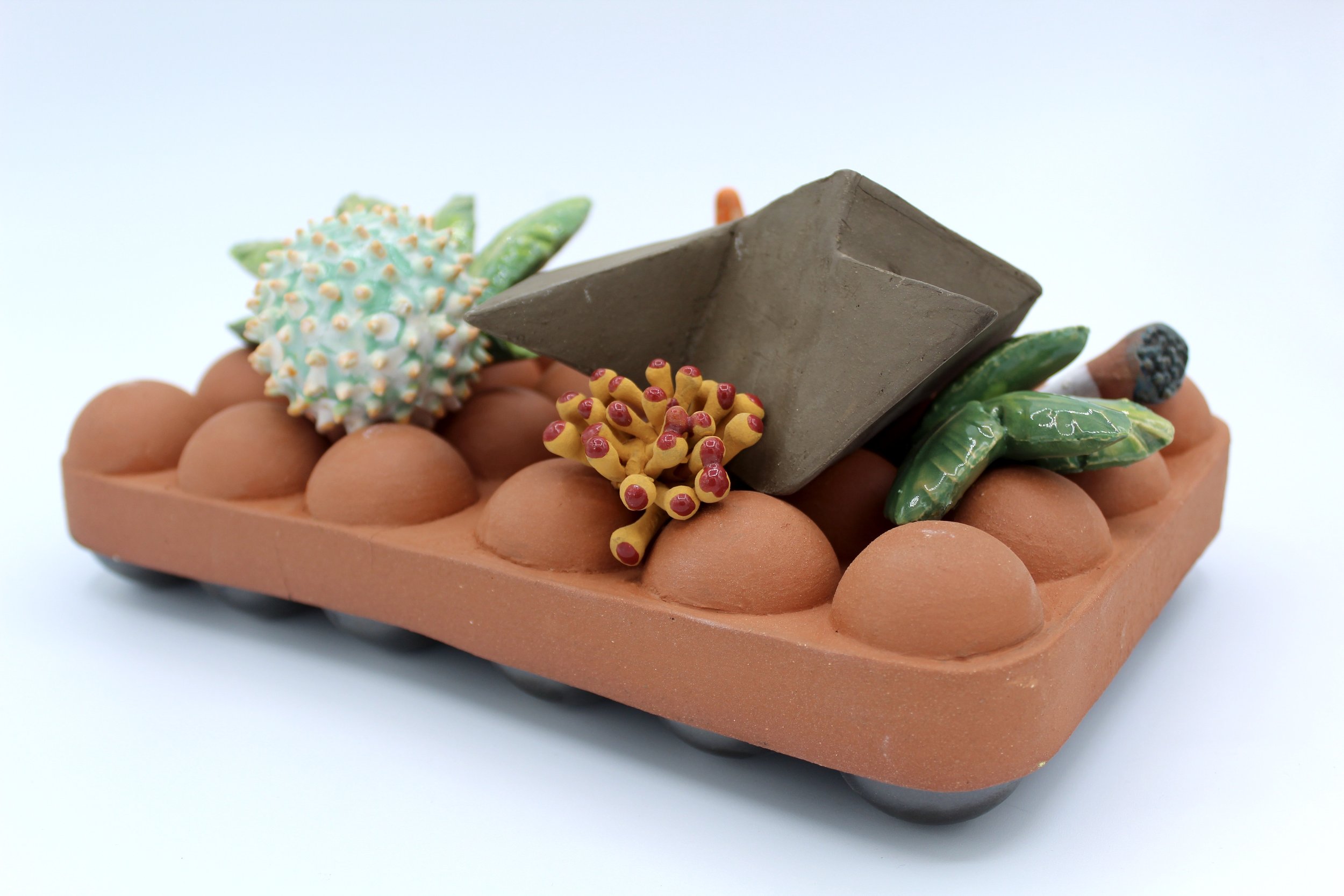Heather Kaplan
BIOGRAPHY
Dr. Heather Kaplan is an artist, educator, and researcher who studies studio artmaking and early childhood education. She is interested in notions of play and materiality, community, contemporary artmaking practices, and storytelling. Theoretical investigations of epistemology and ontology prevail as reiterative themes in her writing, research, and pedagogical and artistic practice. She is currently an Assistant Professor of Art Education at the University of Texas El Paso.
Heather is an artist, educator, and researcher living in the southwest. Employed as an assistant professor of art education at the University of Texas El Paso her art making is an integral part of her life and career. Not originally from the southwest or border region, she is inspired by the textures of the desert and the complexity and contradictions of the border region. Since relocating in 2016 she has been using her ceramics to explore how landscape can convey connection and how objects create relations while still implying an autonomousness and interactivity with the viewer. Her academic work involves the study of studio making and young children and believes that this interest bleeds into her making practice. She creates works that involve ceramic techniques derived from sculpture- including life modeling and mold making to create fantastical tableaus that address the oddness and transcendental qualities of the desert. She uses a variety of techniques including hand building, casting using both slip and press molds, and throwing. She enjoys layering glazes of differing temperatures and textures to achieve complex combinations.
ARTIST STATEMENT
This work is about uncanny landscapes and the play around creating and forming new familiarly unfamiliar spaces. The work does this through the language of toys, figurines, and collectibles in their form, content, and size. Because of their size, what they are made of, their interchangeability, and their figurative qualities my works deal with the imaginative. Like figurines and toys my work begs to be arranged, rearranged, and played with. As a function of this narrative structure implied narratives emerge through the combination and recombination of objects. Texture and form drive my decision making as well as a desire to keep the content and narrative fluid. Depending upon who curates (interacts with, arranges, etc.) the collection of objects different stories unfold.
Specifically, this work is an exploration of play and childlike aesthetics –the aesthetics of carnival, festival, imagination, and play. I also assume that what I am drawn to play with, to rearrange, to look at more closely, and am generally fascinated with will catch the fascination of others. I work with and foster this interest and through this experimentation with forms, color, and texture, I am questioning aesthetics of interaction, play, and adult relations to children and childhood. At the same time these practices create strange playgrounds or landscapes or places to play that are familiar in their childlike language and unfamiliar or uncanny in their form or combination of form. This uncanny element has ramped up in more recent work as a response to the forms, textures, and space of the desert environment I live in.
My practice is rooted somewhere between ceramics and sculpture. I create objects using a variety of techniques. Some originate from ceramics- such as the hand building techniques of pinching and coiling and the practice of slip casting. Others derive from sculpture such as life modeling, mold making, and found objects. I use all these practices and processes to create my work and call upon them to various parts. I am interested in placing realistically modeled pieces next to found objects or in juxtaposing cast found objects next to modeled and cast items. Here I play with different languages of making and the hierarchies and sensibilities they assume.
Much of the I work is made primarily in low fire clay where I render some of the forms by hand and others are caste and altered. I apply many layers of glaze and re-fire the pieces multiple times to achieve my surfaces. The initial making process is then extended to notions of curation and collection. In some instances, I extend my making practice to include the curation of tableaus, vignettes, or scenes pulling from an inventory of made and found objects. Other times, I allow others (often the audience) to interact with the work by playing with, rearranging, and building their own worlds with the work.
Website: www.hgkaplan.com
Instagram: @hgkaplan1


